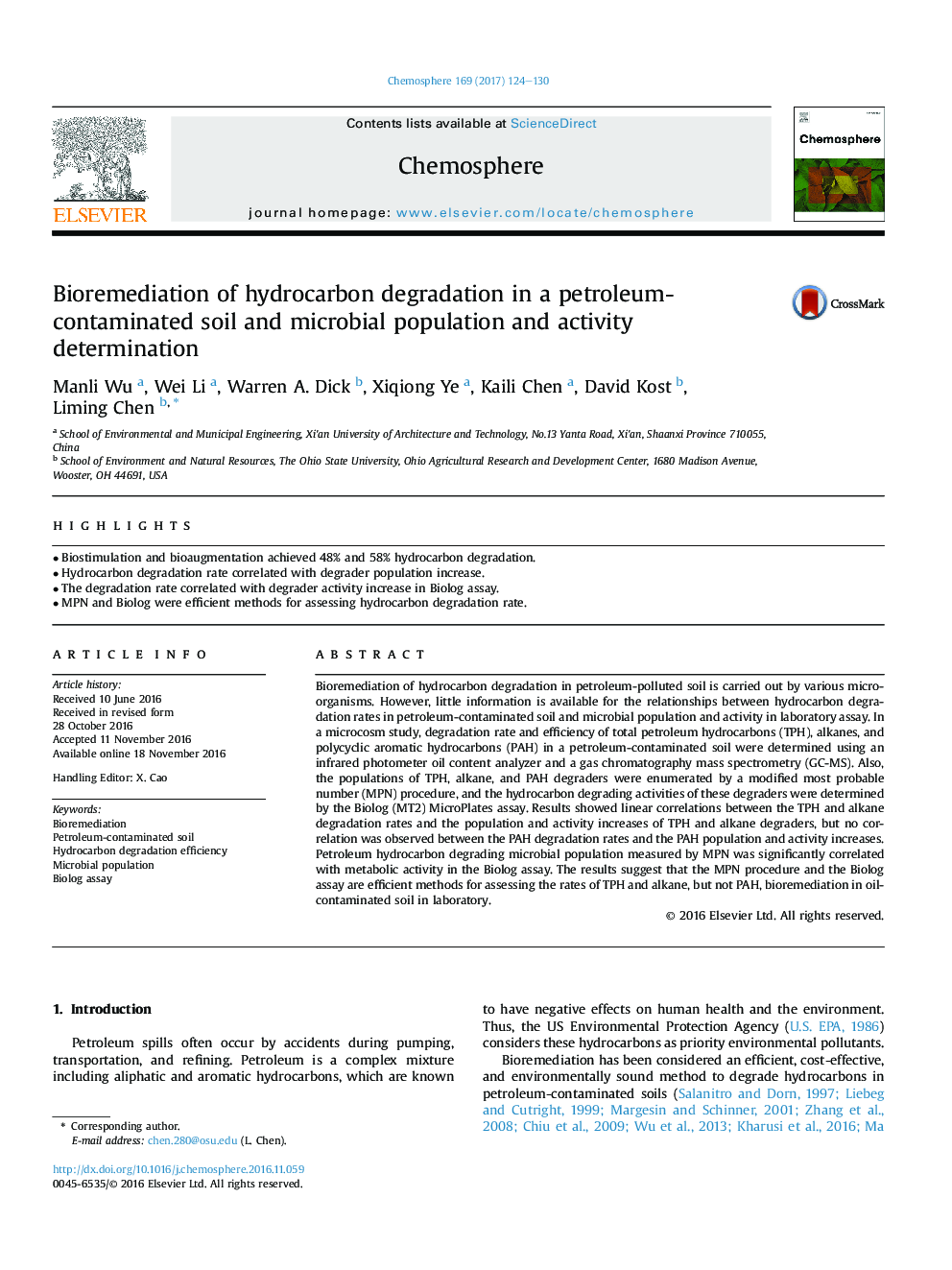| Article ID | Journal | Published Year | Pages | File Type |
|---|---|---|---|---|
| 5747036 | Chemosphere | 2017 | 7 Pages |
â¢Biostimulation and bioaugmentation achieved 48% and 58% hydrocarbon degradation.â¢Hydrocarbon degradation rate correlated with degrader population increase.â¢The degradation rate correlated with degrader activity increase in Biolog assay.â¢MPN and Biolog were efficient methods for assessing hydrocarbon degradation rate.
Bioremediation of hydrocarbon degradation in petroleum-polluted soil is carried out by various microorganisms. However, little information is available for the relationships between hydrocarbon degradation rates in petroleum-contaminated soil and microbial population and activity in laboratory assay. In a microcosm study, degradation rate and efficiency of total petroleum hydrocarbons (TPH), alkanes, and polycyclic aromatic hydrocarbons (PAH) in a petroleum-contaminated soil were determined using an infrared photometer oil content analyzer and a gas chromatography mass spectrometry (GC-MS). Also, the populations of TPH, alkane, and PAH degraders were enumerated by a modified most probable number (MPN) procedure, and the hydrocarbon degrading activities of these degraders were determined by the Biolog (MT2) MicroPlates assay. Results showed linear correlations between the TPH and alkane degradation rates and the population and activity increases of TPH and alkane degraders, but no correlation was observed between the PAH degradation rates and the PAH population and activity increases. Petroleum hydrocarbon degrading microbial population measured by MPN was significantly correlated with metabolic activity in the Biolog assay. The results suggest that the MPN procedure and the Biolog assay are efficient methods for assessing the rates of TPH and alkane, but not PAH, bioremediation in oil-contaminated soil in laboratory.
